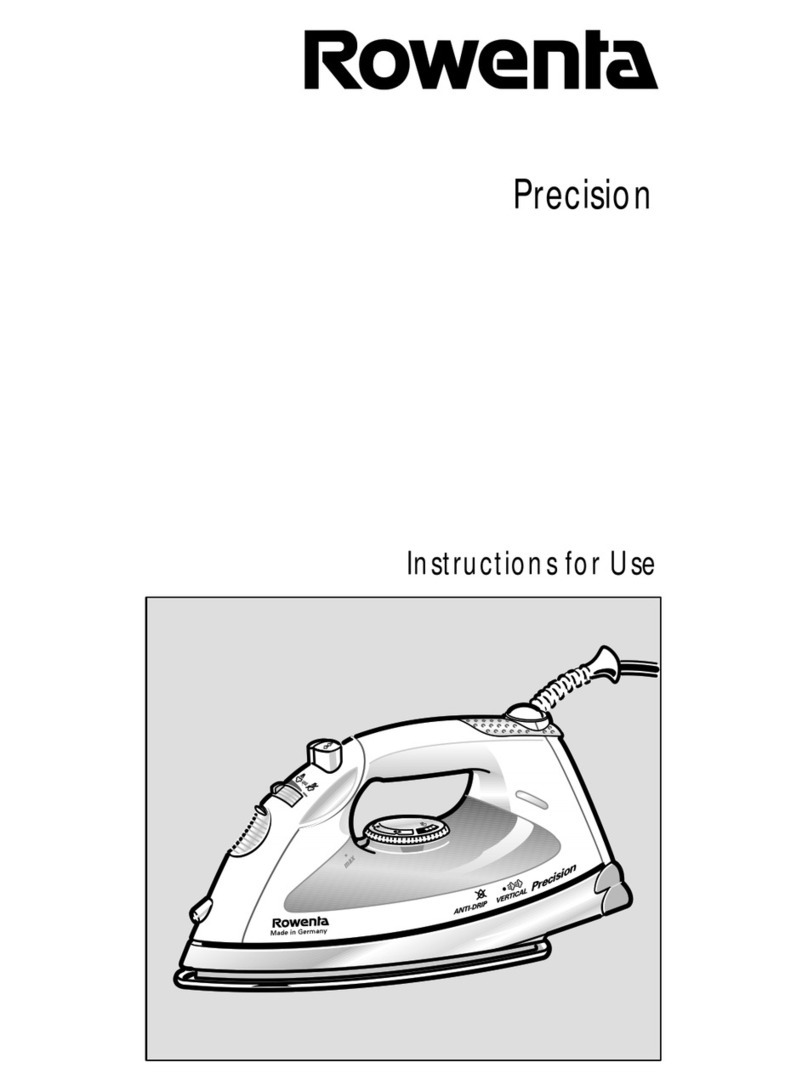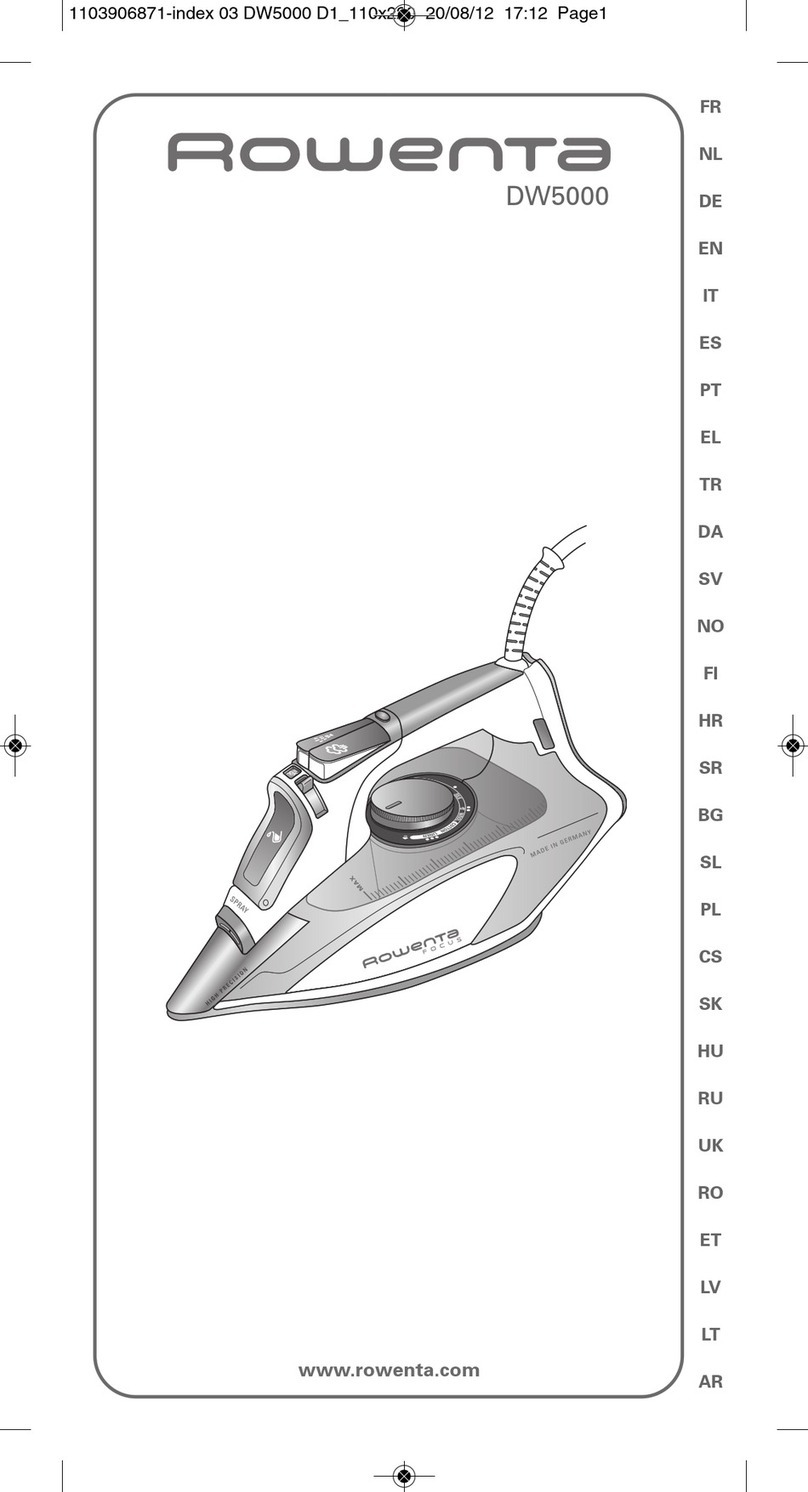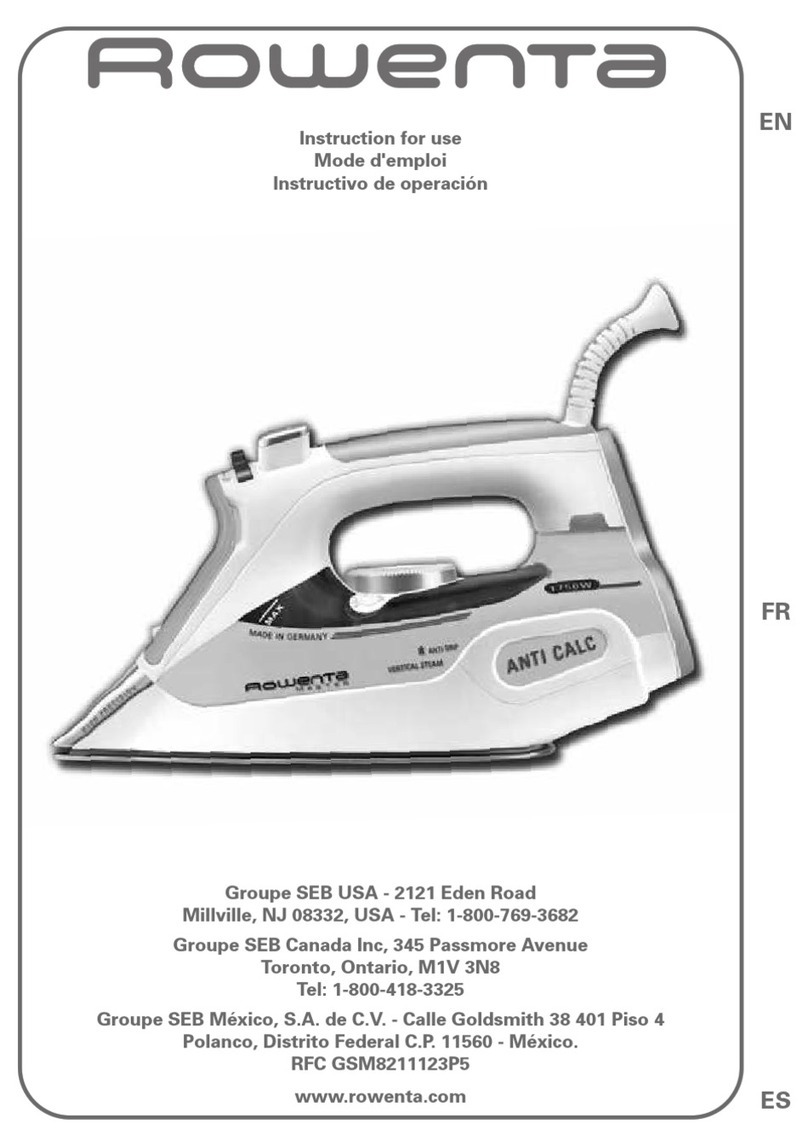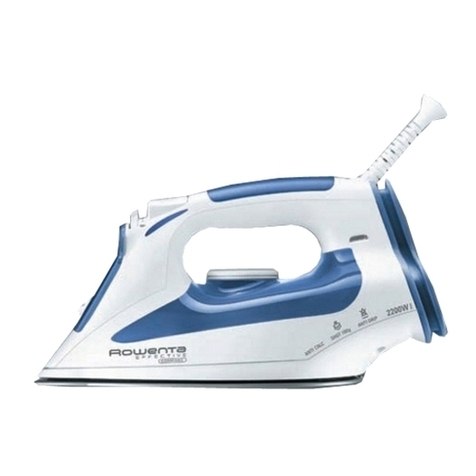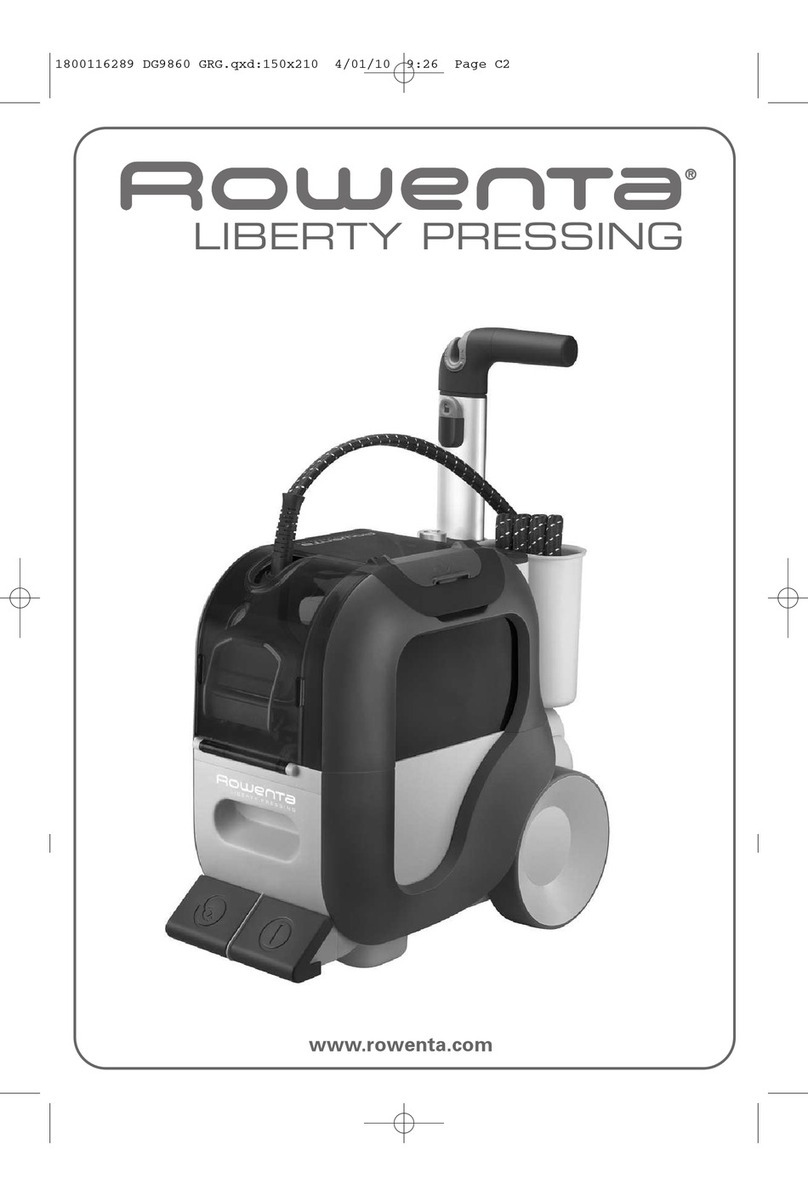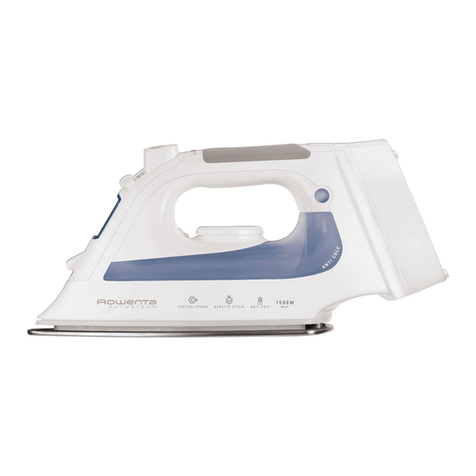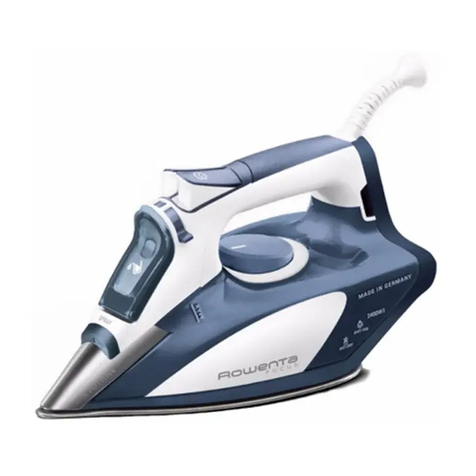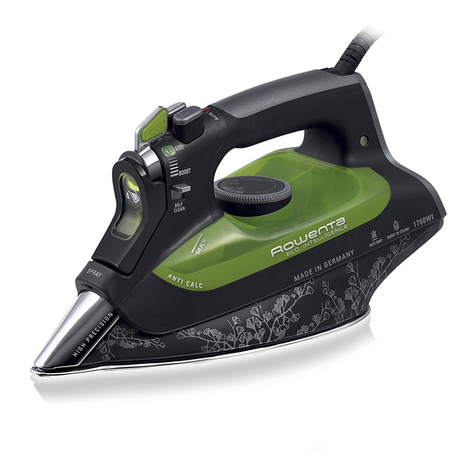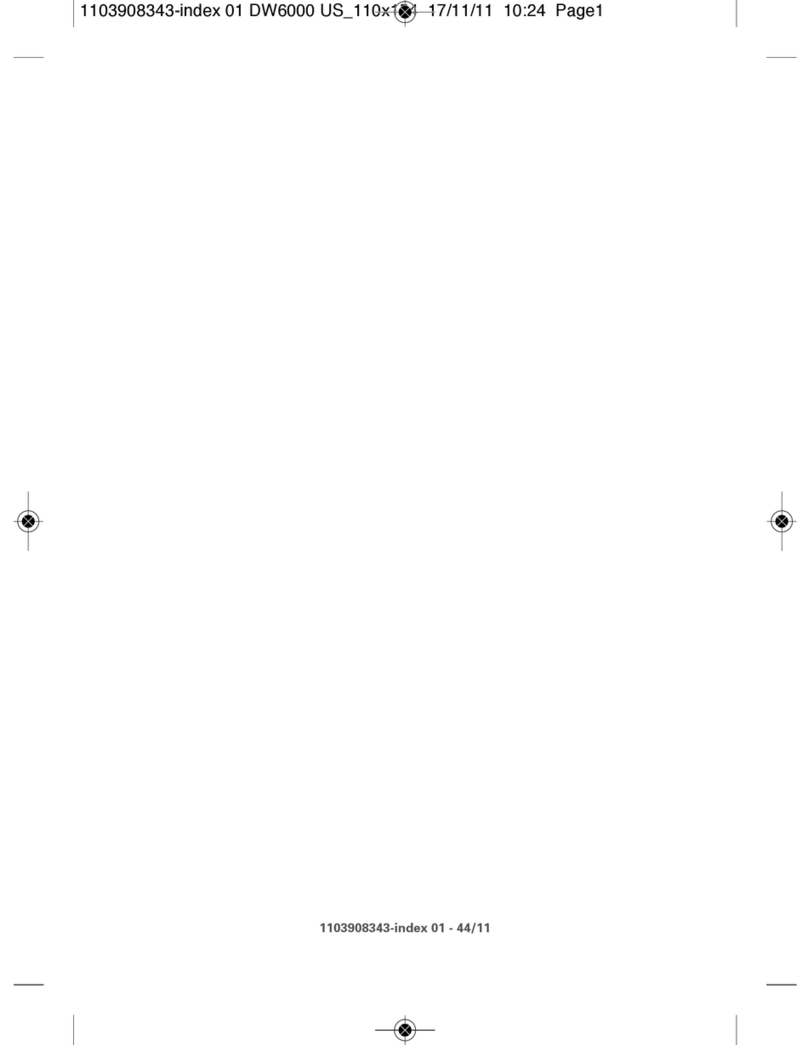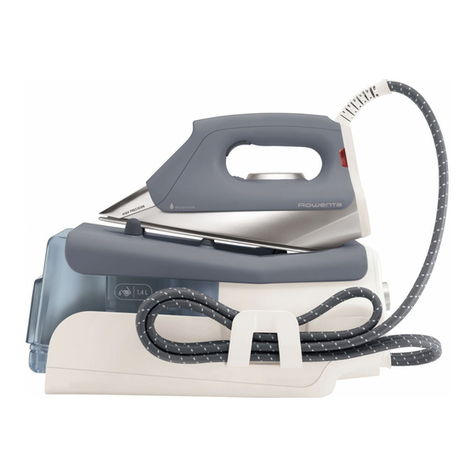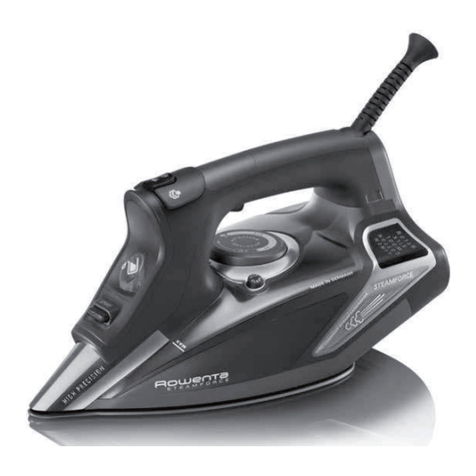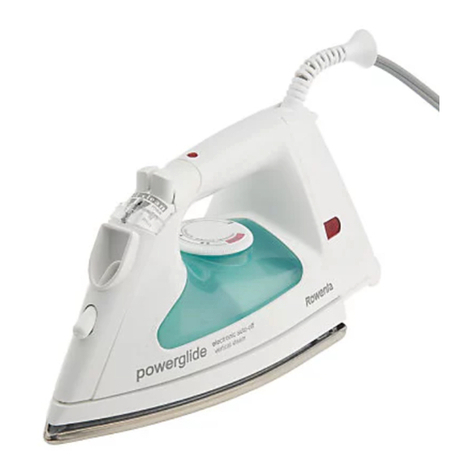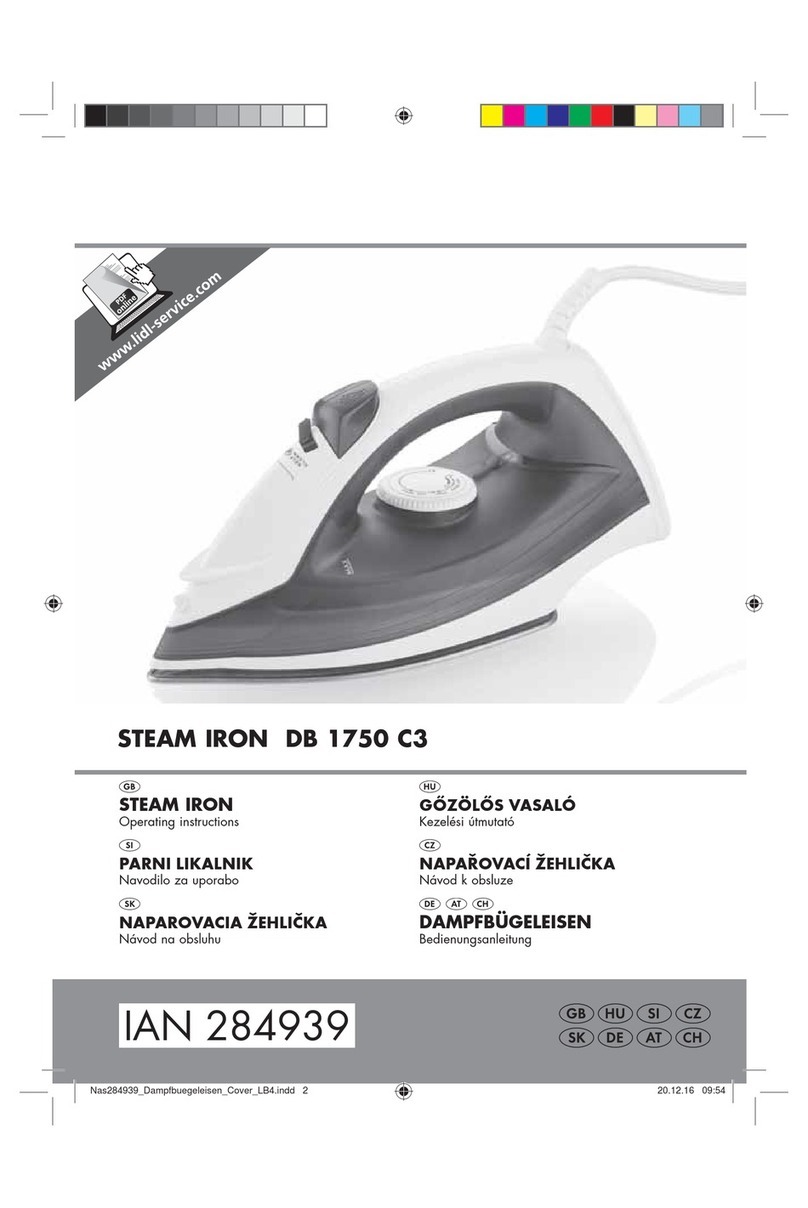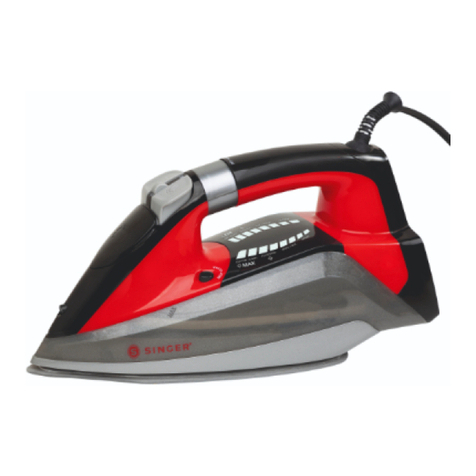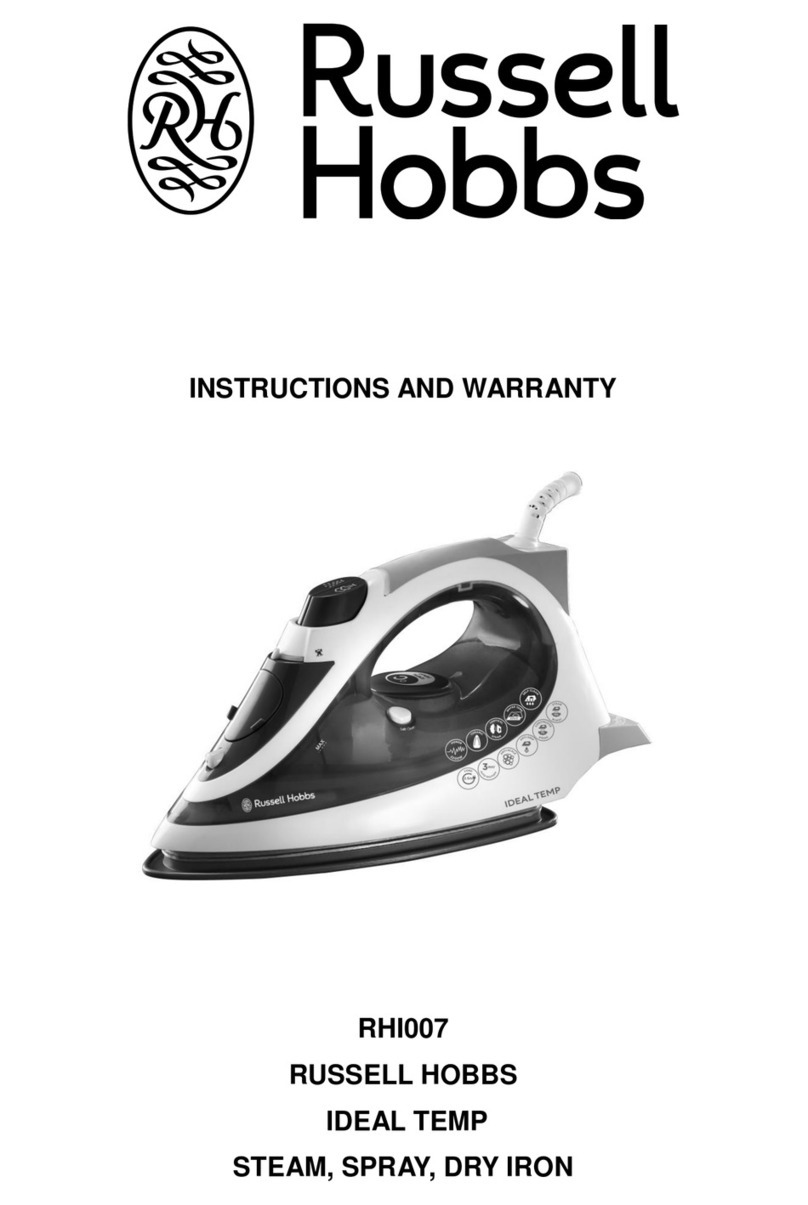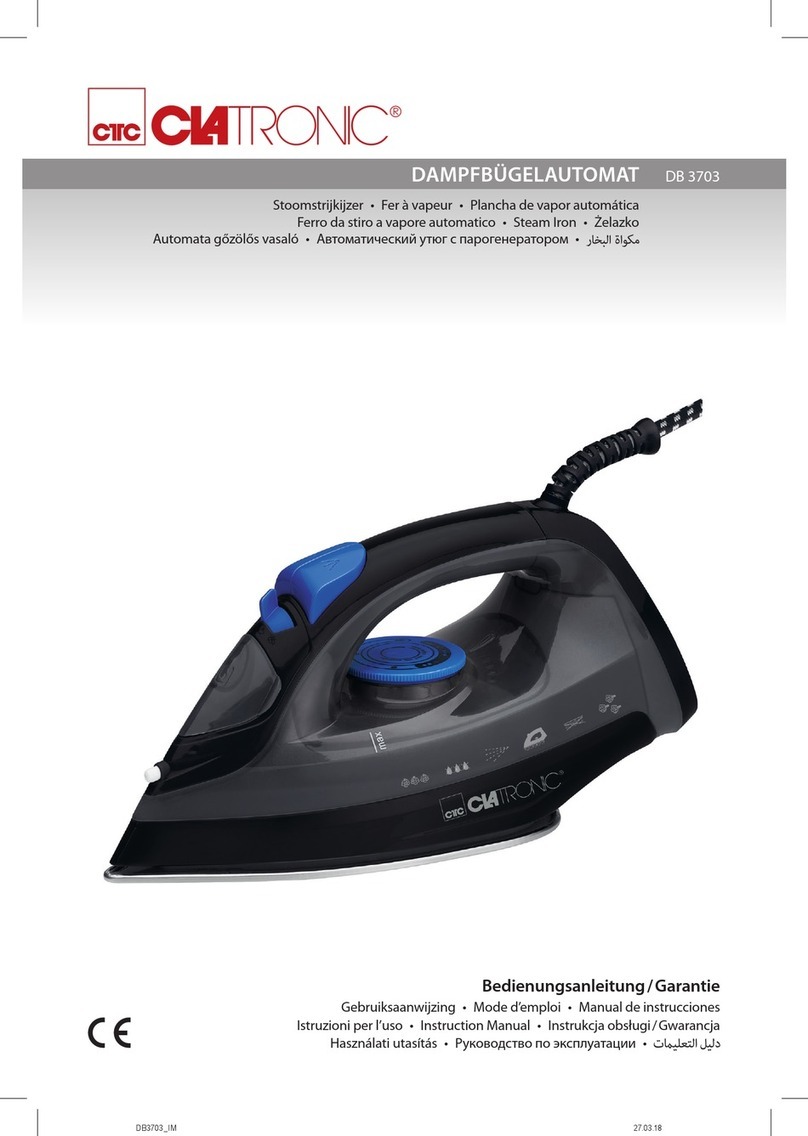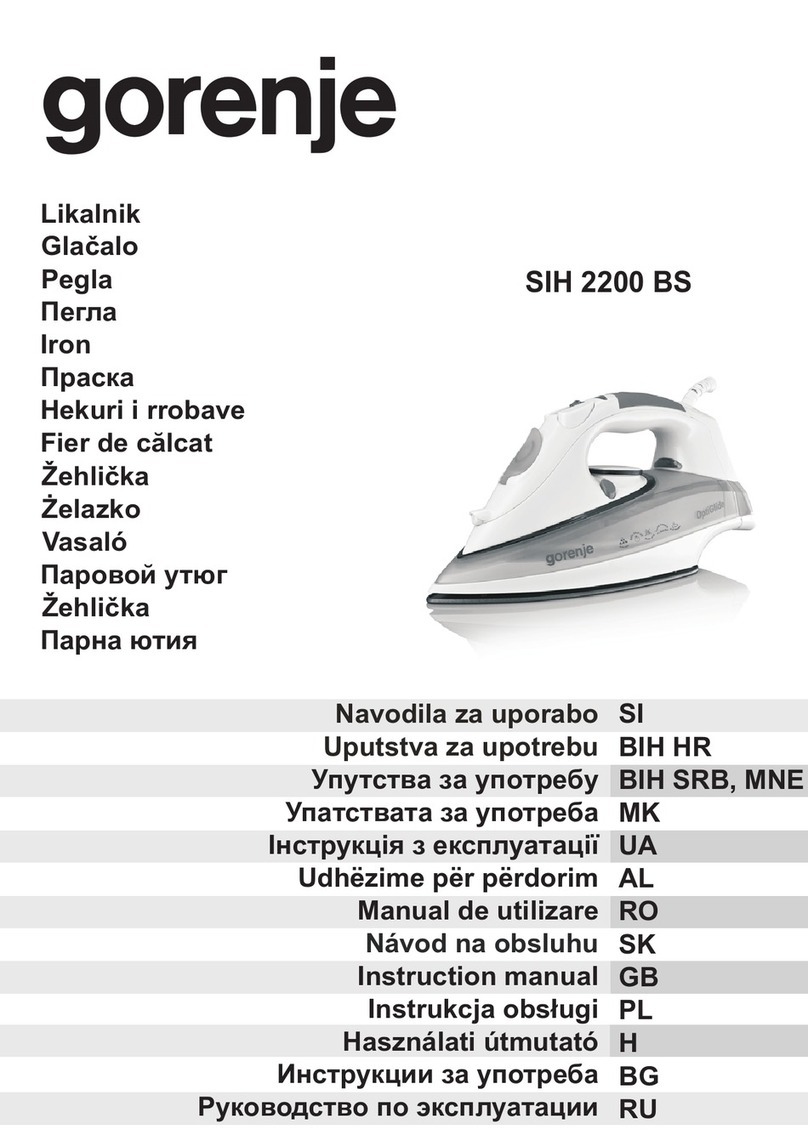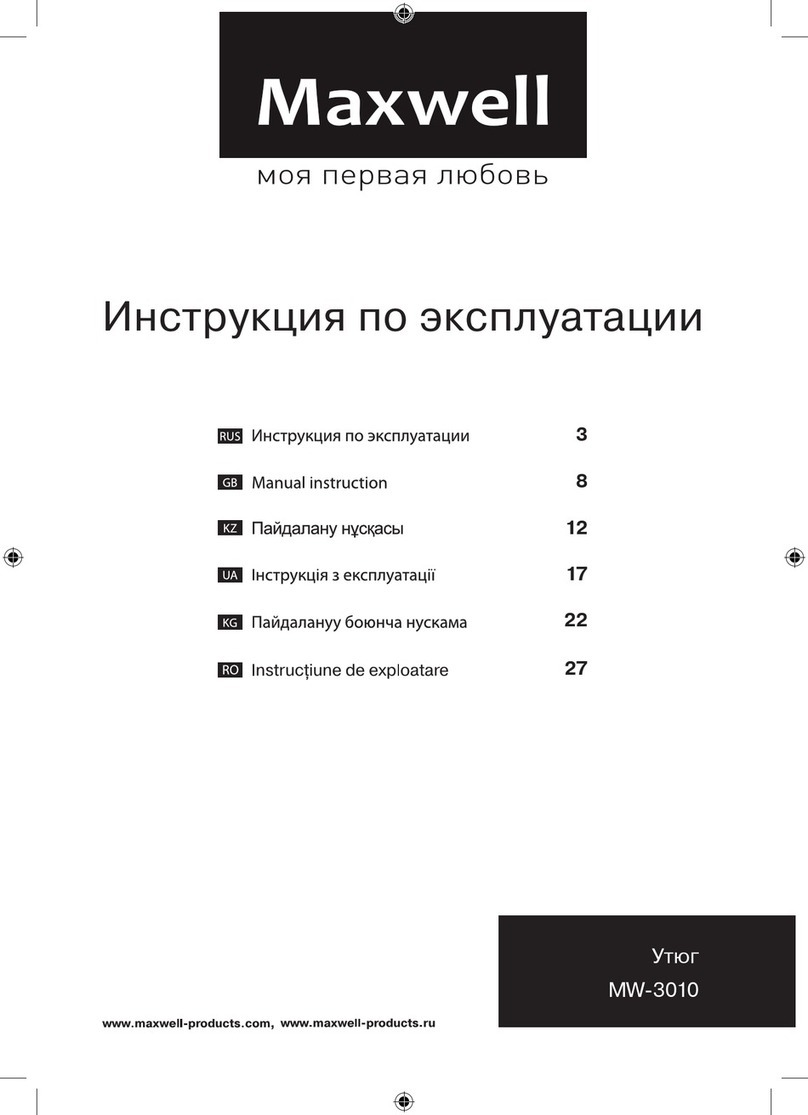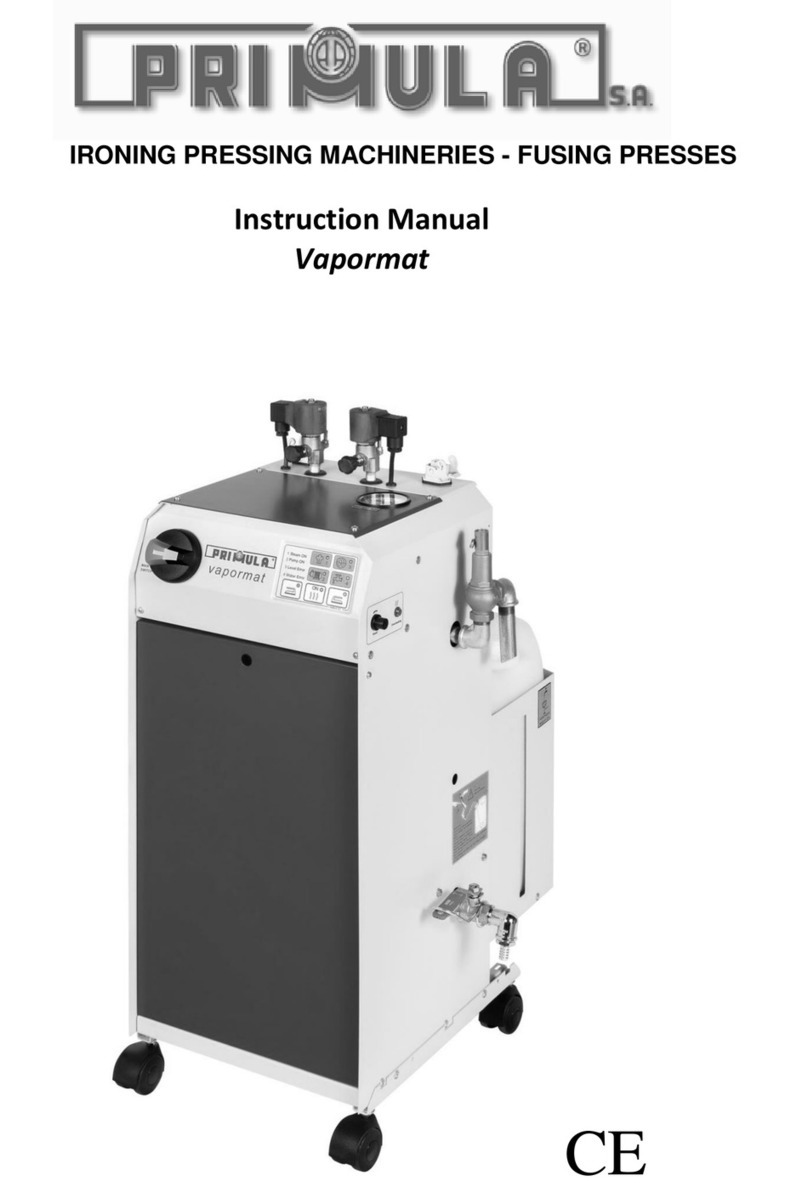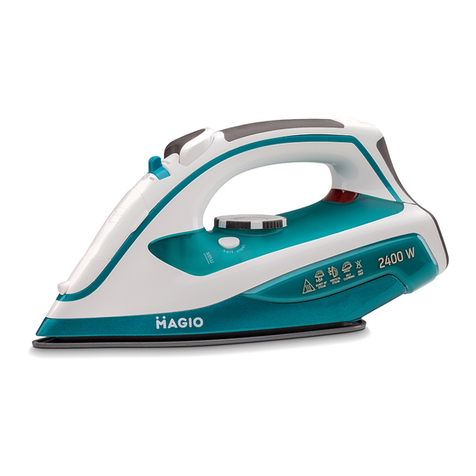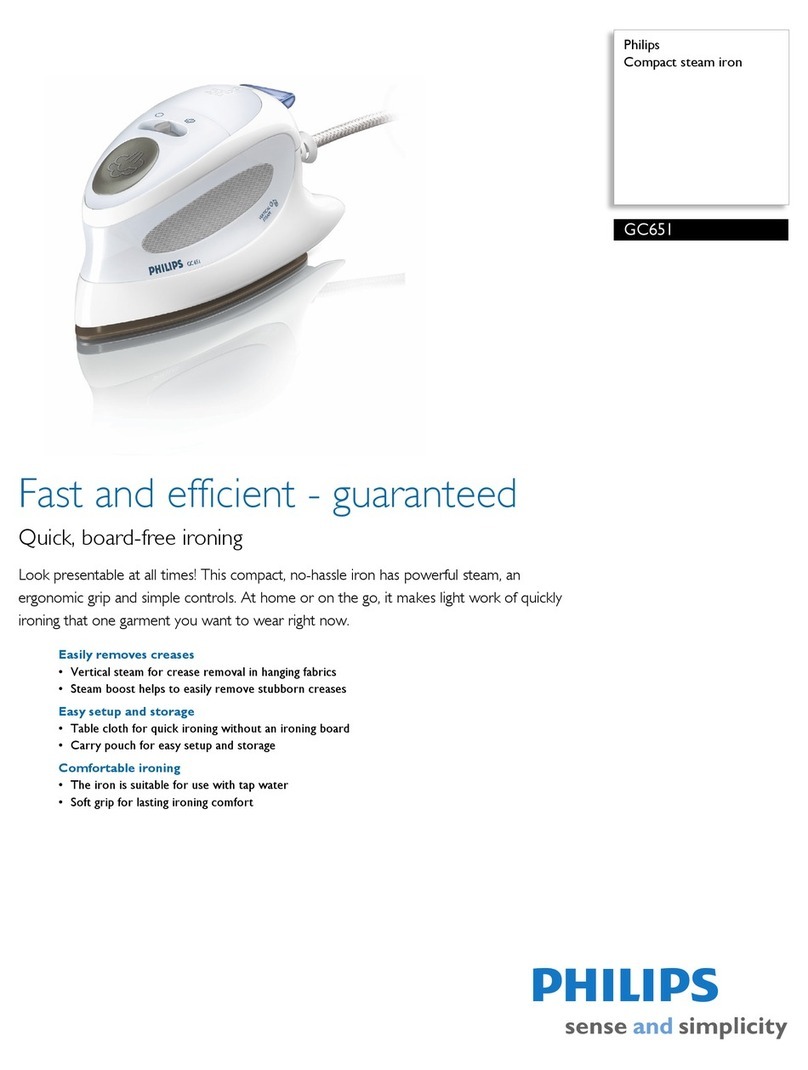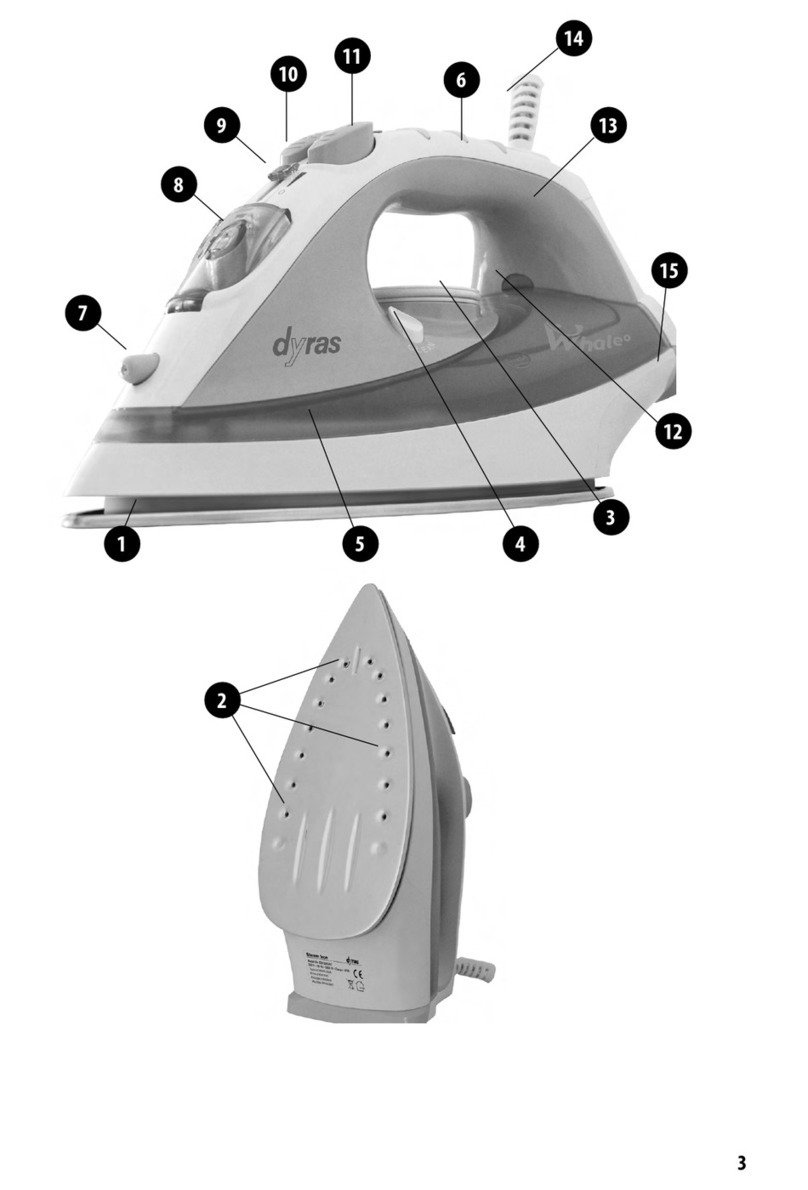Tip: We recommend that you start with fabrics to be
ironed at a low temperature as the iron takes longer to
cool down than to heat up. For mixed fabrics set the
temperature for the most delicate fabrics.
Ironing and Steam functions
E1 Dry ironing
To iron without continuous steam, turn the steam control
( ) to the position and set the temperature to suit the
type of material (care points •, •• or •••).
E2 Steam ironing
You can steam iron by setting the temperature in the marked
steam zone (after ••). The steam quantity can be set to
between (no steam position) and (maximum steam
quantity). We recommend setting to maximum steam
quantity only when the iron is set at temperature setting •••.
E3
Power steam button (temperature setting after •• in the steam
zone)
To generate a powerful jet of steam to remove stubborn
creases, press the power steam button.
Vertical steam ironing (temperature setting after •• in the
steam zone)
Ideal for removing creases from suits, jackets, skirts, han-
ging curtains etc.
Important:
Never steam or iron clothing that is being worn!
• Hang the garment on a hanger
• Set the thermostat control to maximum steam
• Hold the iron a few centimetres away from the garment
to avoid burning delicate fabrics
• Press the power steam button repeatedly, moving the
iron from top to bottom
The power steam and vertical steam functions (E3) are
also possible to use if the steam control is set to the
position. The interval between bursts of steam should be
about 4 seconds.
Important: Never direct the steam at persons or animals!
Do not touch delicate fabrics with the hot soleplate!
E4 Spray function
To dampen stubborn creases, press the spray button.
Additional functions
F1 Self Clean – prolongs the life of the iron
The Self clean function flushes dirt and scale particles
out of the steam chamber.
To operate:
• Fill the tank with untreated tap water up to the maxi-
mum mark and heat the iron to max. temperature.
• Unplug from the mains.
• Hold iron over a sink horizontally, push the steam control
( ) past the position and into the Self Clean positi-
on and hold it there: steam will now begin to build up.
After a few seconds water and steam will emerge from
the soleplate, rinsing dirt and scale particles out of the
steam chamber.
1
English
Safety instructions
Dear customer,
thank you for purchasing this appliance and for your confidence
in us. Please read the operating instructions carefully and keep
them in a safe place.
Appliance description
1 Spray button
2 Power steam button
3 Variable steam control
with Self Clean Function
4 Thermostat light
5 Temperature control dial
6 Filling inlet
7 Spray nozzle
8 Mains supply cord
9 Flexible cord support
10 Water tank with maximum
water level indicator
11 Soleplate
•The appliance complies with EU directives 72/23/EEC and 89/336/EEC.
•The appliance may only be connected to alternating current as
specified on the rating plate.
•An electrical appliance is not a toy. Use and store the appliance
out of reach of children. Do not let the supply cord hang down.
•Do not leave the appliance unattended while it is connected to
the mains supply.
•Electrical appliances generate high temperatures. Always use the
handles provided and warn other users of the potential dangers (e.g.
escaping steam or hot water, especially when ironing vertically).
•Never iron clothing which is being worn.
•Always disconnect the appliance:
– before filling or emptying the water tank;
– before leaving the room (even for a short time);
– after use.
•Never unplug the appliance by tugging on the cord.
•Only use an extension lead or cord reel which is rated at 10A or
greater and has an earth.
•Do not immerse the appliance in water.
•An electrical appliance should not be used if:
– the appliance, the supply cord or the cord protector is damaged;
– the appliance has been dropped;
– the appliance is obviously leaking. In this case the appliance
should be returned to an approved Rowenta Service Dealer for
repair. (See enclosed list for addresses.)
•Repairs to electrical appliances may only be carried out by specia-
lists. Improperly carried out repairs can cause serious danger to
users. To avoid danger to users, a defective or damaged supply cord
may only be replaced by an authorised Rowenta service centre.
•This product has been designed for domestic use only. Any com-
mercial use, inappropriate use of failure to comply with the
Instructions, the manufacturer accepts no responsibility and the
guarantee will not apply.
•When the appliance has reached the end of its operational life it
should be disposed of through the correct channels.
A
32
Before use
BEFORE DOING ANYTHING ELSE, REMOVE THE SOLE-
PLATE PROTECTOR AND DISCARD.
Before using the iron for the first time:
– Heat the appliance at the maximum setting without
water (see D). A little smoke and a slight smell may be
emitted, but this is only temporary. The water tank can
then be filled directly with untreated tap water using a
jug (see C).
– Each time you begin ironing, allow the iron to emit
steam for at least 1 minute. During this time press the
power steam button from time to time to release
several bursts of steam. Any particles released through
the soleplate during first use are harmless and are due
to the newness of your iron
Filling the water tank
Before filling the water tank, unplug from the mains and
set the steam control to the position.
Tilt the iron and pour in untreated tap water up to the
maximum level ( ).
What water may be used?
Your iron has been designed to operate using untreated
tap water. However, if your water is very hard, you can
mix it 50% untreated tap water with 50% distilled or
demineralised water.
Do no add anything to the contents of the water tank
and do not use water from clothes dryers, scented or
softened water, water from refrigerators, batteries or air
conditioners, pure distilled water or rain water. These
contain organic waste or mineral elements that become
concentrated when heated and cause spitting, brown
staining or premature wear to your iron.
Tip: Spray starch onto the reverse side of the fabric to
be ironed.
Setting the temperature
Using the temperature control ( ), set the iron tempera-
ture to suit the type of material. We recommend using
the above table as a guide. The thermostat light ( )
indicates that the soleplate is heating up. When the light
goes out, the required temperature has been reached.
Please note: When heating up the iron from cold, wait
until the thermostat light has gone out a second time.
Only then is the set temperature reached.
B
C
D
Ironing label Fabric
Synthetic fibres e.g.
viscose, polyester
silk, wool
cotton, linen
Temperature
control
E
F
DX2000_UK 03.11.2003 10:57 Uhr Seite 2


